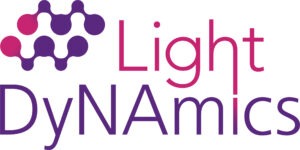Build your own spectrophotometer using LEGO!
ESRs involved: ESR 2: Vishal Kumar Jaiswal, ESR 3: Martha Yaghoubi Jouybari, ESR 9: Maria Elena Castellani, ESR 14: Irene Ponzo, ESR 15: Marialucrezia Losito
Age recommendation
Between 20-25

Subject of the experiment
Chemistry, spectroscopy

Length
150 minutes
Hypothesis
With regard to the principles of absorption spectroscopy, the Beer−Lambert law is derived by considering that the loss of light traversing an absorbing material is proportional to the amount of light present initially, −dI/dx ∝ I. This is shown directly using the first configuration of the experiment and also offers an opportunity to explain why exponential functions are so common in physical sciences.
Objectives
- Understand the principles of absorption spectroscopy, together with the concepts of absorbance and molar extinction coefficient.
- Provide a visual and quantitative validation of the Beer−Lambert law.
- Develop their scientific inquiry skills.
- Know the meaning of spectrophotometer, absorption spectrum, Beer-Lambert law concept.
Introduction
In this laboratory experience, students will gain basic knowledge on absorption spectroscopy with a simple, low-cost instrument using interlocking bricks and few optical components that can (with minimal changes) function as both a spectrophotometer and fluorometer. The spectrometer allows the collection of semiquantitative data, requiring both data analysis and calibration, as these are essential components of practical spectroscopy.

